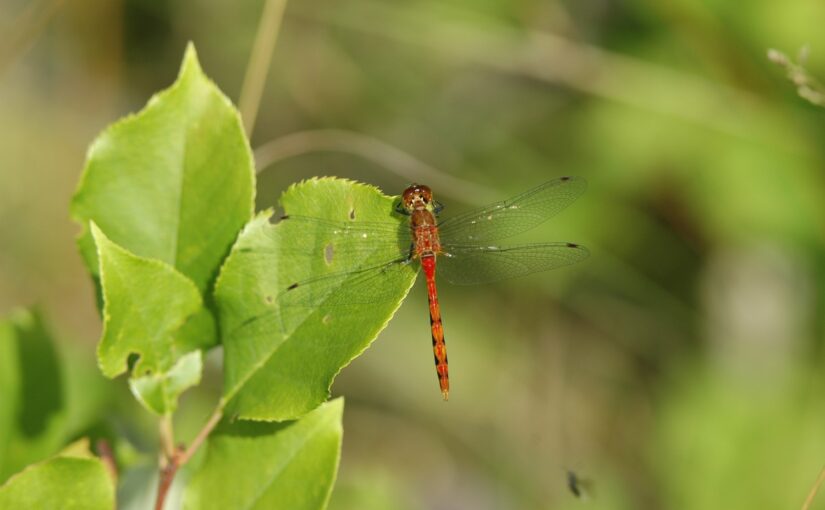Today’s blog comes to us from Park Naturalist Sarah Lamond at Algonquin Provincial Park.
Picture it: a warm July day at Algonquin.
You’re basking in the day’s rays and exploring an interpretive trail.
It’s all picture perfect until you hear that telltale buzz and feel an all-too-familiar pain on your scalp.
The Deer Flies have arrived.
Swatting at the growing swarm, you look to the sky and wonder: will there be no relief?
And then they arrive. The prehistoric predator. The Deer Fly devourer. The people’s champion.
Dragonflies.
We often only catch brief glimpses of dragonflies as they zip around, at speeds of upwards of 55 km per hour, hunting for insects. But there is so much more to their incredible lives than just hunting that most people never know about.
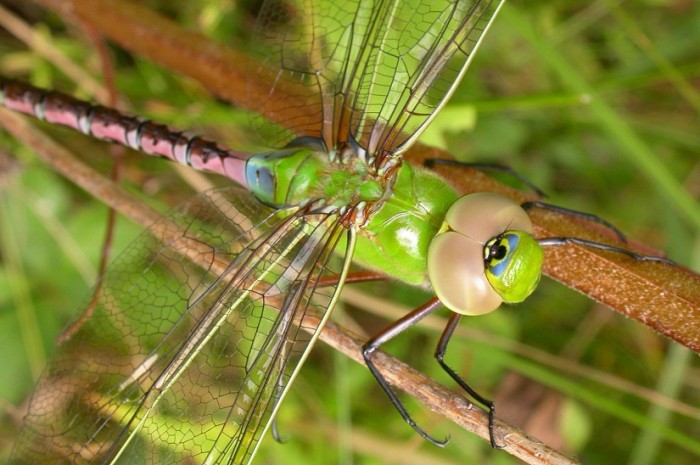
Believe it or not, of the roughly 7,000 species of dragonflies in the world today, about 130 are found in Ontario. Each species has its own distinct colour and patterns, niches, and behaviours.
But that’s only the start of what makes dragonflies so incredible!
Know the difference: dragonfly versus damselfly
Dragonflies are part of the family Odonata (meaning “toothed ones”, as they have large, toothed mandibles), which comprises both dragonflies and damselflies. Odonata insects have been around for 325 million years!
While there are family similarities between dragonflies and damselflies, there are key features that set them apart. Dragonflies have a relatively stout body, and, by comparison, damselflies bodies are slender.
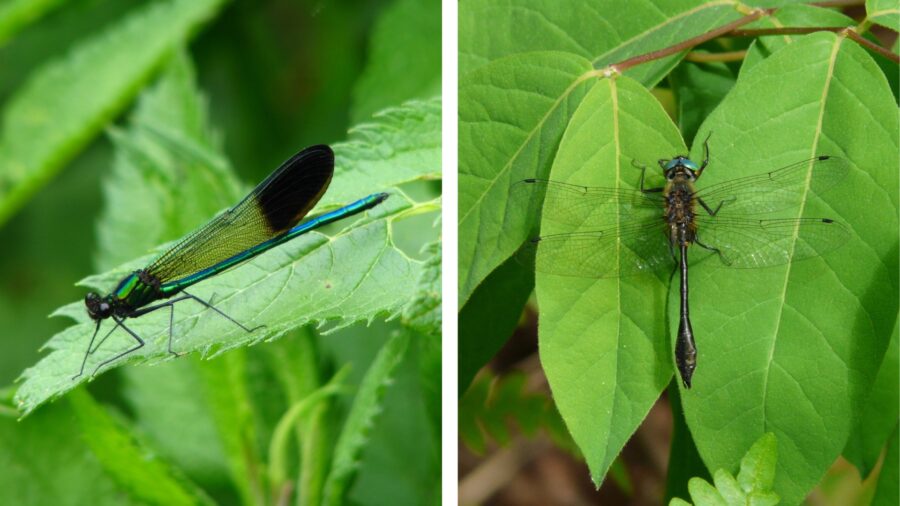
The easiest way to tell them apart, however, is when they are perched. Sitting dragonflies’ wings are extended to each side of the body, while sitting damselflies fold up their wings and hold them above their body.
In the beginning: life underwater
Dragonflies have a fascinating life journey. While we think of them as zipping around the sky, they actually spend the majority of their lives underwater in their larval stage.
When laying their eggs, adult females will hover over water until they find the perfect spot, then begin to continuously dip the tip of their abdomens into the water to release the eggs. Once the eggs hatch, the larvae can take two to six years before turning into an adult!
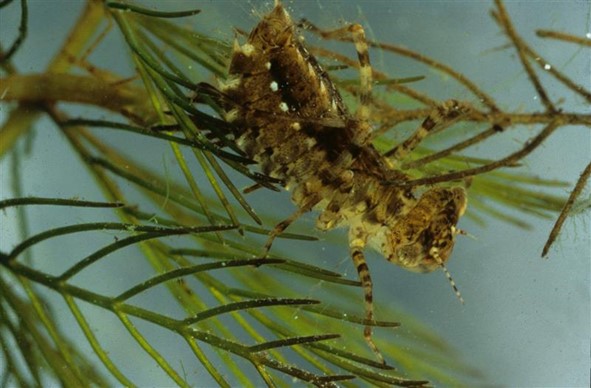
During the larval stage, baby dragonflies molt between six and 15 times. To fuel this process, dragonflies subsist on other aquatic invertebrates, larvae and sometimes even tiny fish! They do this with an extendable jaw, which they can shoot out at lightning speed to capture their prey.
Not only do they have a unique way of catching food, but their quick movements through water are also unique. Dragonfly larvae have gills that line their rectum, and pump water through them.
When they need to move quickly, they blast out pressurized water from the end of their gut, propelling them through the water at rapid speeds. They use this tactic both to hunt prey and to avoid becoming dinner for larger predators like fish and frogs.
From larvae to adult
When a dragonfly nymph is finally ready to turn into an adult, the nymph will crawl out of the water onto land, molt out of its old skin (known as exuviae) and emerge as a fresh, winged adult.
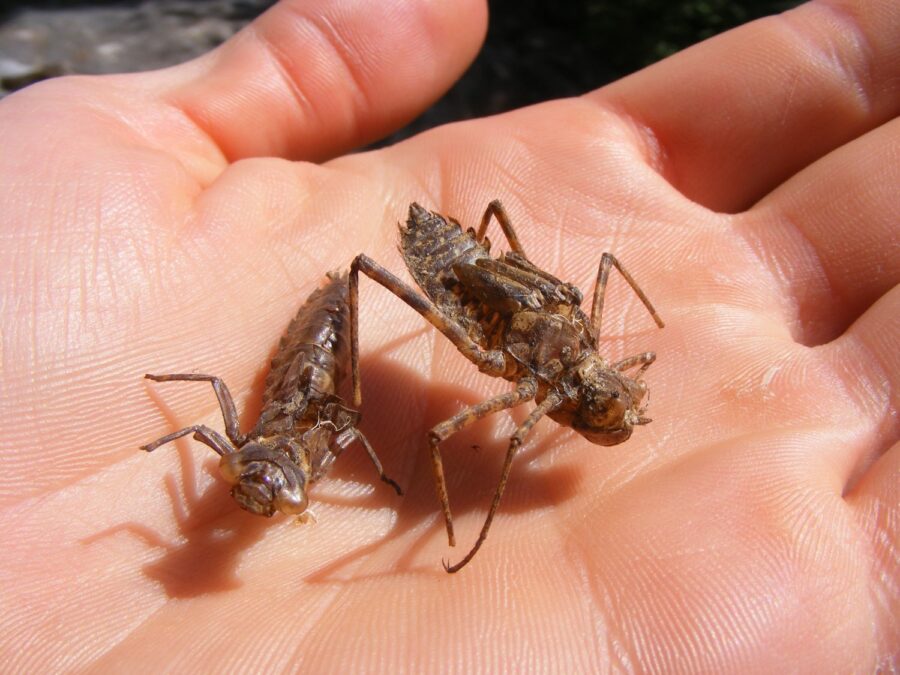
It often takes hours before the dragonfly can begin to fly, as it must pump blood through the abdomen and through veins in the wings, which gradually expand.
Skillful predators in the air
As adults, dragonflies only live for a short time, from a couple of weeks to up to six months. In this short period, they focus on three things:
- defending their territory
- finding a mate to reproduce
- eating
Adult dragonflies hunt their prey in flight and are extremely agile flyers. They can fly forwards and backwards, hover in mid-flight, and even rotate 360 degrees in place!
While flying, they use their six legs to grab their food out of mid-air, then bring the food up to their large mandibles to feed.
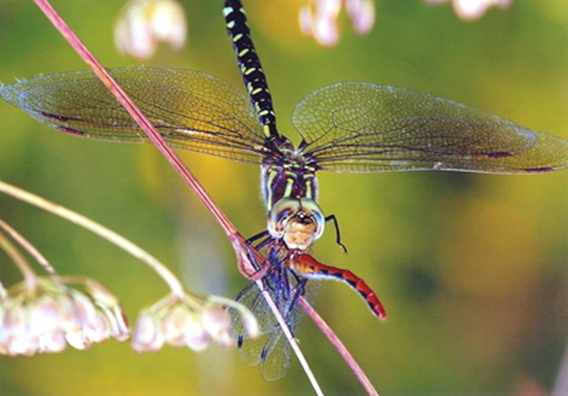
Dragonflies have excellent vision relative to other insects. Their large alien-like compound eyes are made up of nearly 28,000 individual units, known as ommatidia, that cover most of their head.
Their field of vision, combined with their flying ability make them quite skilled at catching food while dipping and dodging predators (or a keen naturalist’s bug net!).
Dragonflies in Algonquin
Dragonflies are some of the Algonquin naturalists’ favourite species to observe. For 26 years, Algonquin Provincial Park naturalist staff have been running an annual dragonfly and damselfly count in the first week of July.
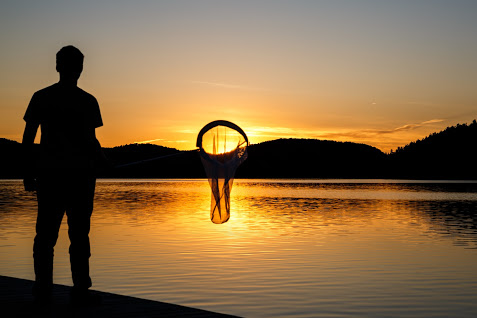
This count is run very similarly to other community science surveys, like Christmas Bird Counts. During this type of survey, a designated count circle is determined and split into areas. Groups of naturalists and volunteers are then given an area, where they identify and count all the dragonflies and damselflies they see throughout the day.
In order to properly identify many of the species, they must be caught in a bug net and handled for a closer look; they can then be let go without any harm done to them.
As many as 74 species have been recorded on count day! Getting an idea of Odonata numbers each year is important to track long-term trends in their populations and help us to reveal declines or recoveries of species in the area.
Dragonflies are ecologically important!
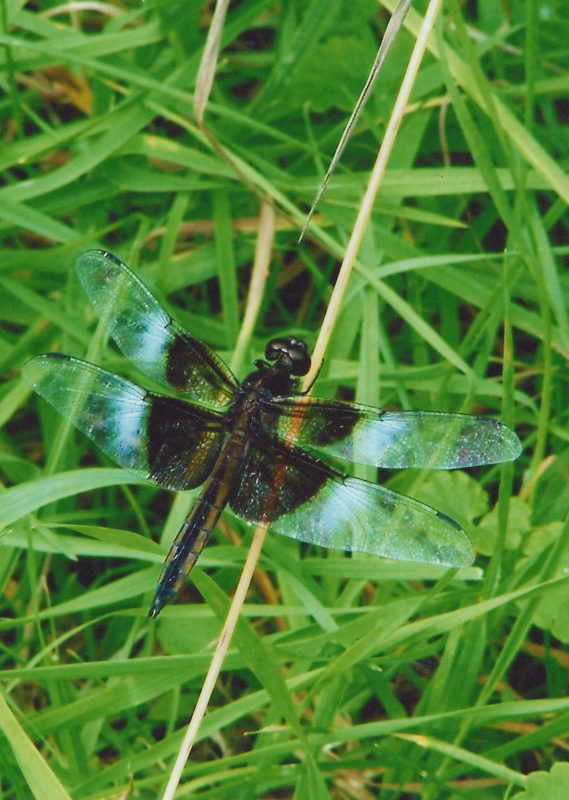
Dragonflies aren’t just fascinating for their life cycle and their flying style. They are important to their ecosystems and are valuable environmental indicators, as they rely on healthy aquatic ecosystems and food chains.
Changes in these insects’ population can help reveal changes in water ecosystems.
They are a top predator in the insect world and, as such, play a significant role in controlling the insect population — in particular biting insects and agricultural pests.
Learn for yourself
Dragonflies and damselflies are an easy species to observe. You can find them pretty much anywhere there is water. If you would like to learn more about the species you can find in Ontario, there are some great field guides, such as the Photo Field Guide to the Dragonflies and Damselflies of Southern Ontario and the Algonquin Field Guide to the Dragonflies and Damselflies of Algonquin Park and Surrounding Area.
You can also upload photos of your dragonfly and damselfly sightings to the scientific databases iNaturalist and Odonata Central.
Sharing posts contributes to ongoing community science projects that track these magnificent creatures in our area!
